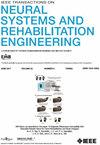An Interventional Brain-Computer Interface for Long-Term EEG Collection and Motion Classification of a Quadruped Mammal
IF 4.8
2区 医学
Q2 ENGINEERING, BIOMEDICAL
IEEE Transactions on Neural Systems and Rehabilitation Engineering
Pub Date : 2025-04-21
DOI:10.1109/TNSRE.2025.3562922
引用次数: 0
Abstract
Brain-computer interfaces (BCI) acquire electroencephalogram (EEG) signals to effectively address postoperative motor dysfunction in stroke patients by discerning their motor intentions during significant movements. Traditionally, noninvasive BCIs have been constrained by limitations in their usage environments; whereas, invasive BCIs damage neural permanently. Therefore, we proposed a novel interventional BCI, in which electrodes are implanted along the veins into the brain to acquire intracerebral EEG signals without an open craniotomy. We collect EEG signals from the primary motor cortex in the superior sagittal sinus of sheep during three different significant movements: laying down; standing; and walking. The first three month data are used to train the neural network, and The fourth month of data were used to validate. The deep learning model achieved an 86% accuracy rate in classifying motion states in validation. Furthermore, the results of the power spectral density (PSD) show that the signal power in the main frequency band did not decrease over a period of five months, which demonstrates that the interventional BCI has the ability to effectively capture EEG signals over long periods of time.四足哺乳动物长期脑电图采集与运动分类的介入脑机接口
脑机接口(BCI)获取脑电图(EEG)信号,通过识别卒中患者在重大运动中的运动意图,有效解决卒中患者术后运动功能障碍。传统上,非侵入性脑机接口受到其使用环境的限制;而侵袭性脑机损伤则对神经系统造成永久性损伤。因此,我们提出了一种新的介入性脑机接口,其中电极沿静脉植入大脑,无需开颅即可获取脑内EEG信号。我们从羊的上矢状窦初级运动皮层收集了三种不同的重要运动:躺下;站;和行走。前三个月的数据用于训练神经网络,第四个月的数据用于验证。在验证中,深度学习模型对运动状态的分类准确率达到86%。此外,功率谱密度(PSD)结果显示,主频段信号功率在5个月的时间内没有下降,表明介入性脑机接口具有长时间有效捕获脑电信号的能力。
本文章由计算机程序翻译,如有差异,请以英文原文为准。
求助全文
约1分钟内获得全文
求助全文
来源期刊
CiteScore
8.60
自引率
8.20%
发文量
479
审稿时长
6-12 weeks
期刊介绍:
Rehabilitative and neural aspects of biomedical engineering, including functional electrical stimulation, acoustic dynamics, human performance measurement and analysis, nerve stimulation, electromyography, motor control and stimulation; and hardware and software applications for rehabilitation engineering and assistive devices.

 求助内容:
求助内容: 应助结果提醒方式:
应助结果提醒方式:


